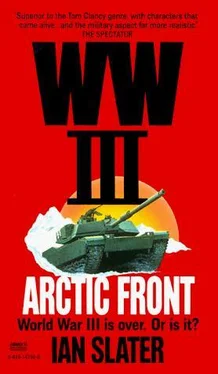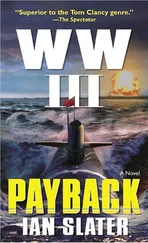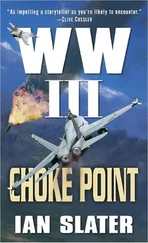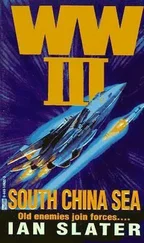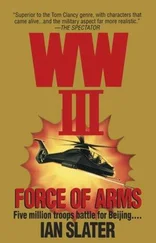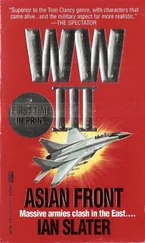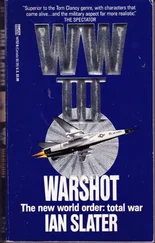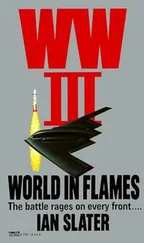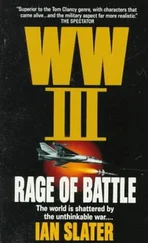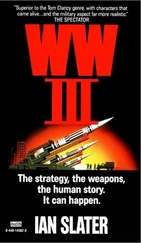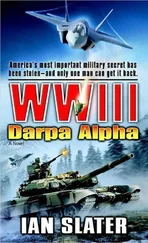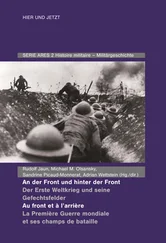“No,” he was told — some CBN bastard was doing a “Baghdad Pete” on them.
“You mean he’s actually on Big Diomede?”
“Either that or close enough. Maybe Little Diomede.”
“I thought Freeman ordered that son of a bitch off?”
The aide, a bright young masters degree from Princeton’s International Relations program, was red-faced. “Ah, bit of a screwup there, Mr. Trainor.”
“Spill it, Simpson, spill it!”
“Ah — one of the Eskimos that came out on Little Diomede’s Evac chopper—” Simpson was looking down at some hurriedly scribbled notes. “Couple of hours before the attack. Well, far as we can tell so far, someone apparently saw the press credentials hanging around someone’s neck and figured it was the CBN guy”
“But it wasn’t!” snapped Trainor.
“Doesn’t look like it, sir. Uh, all rigged up in winter gear, snow flying everywhere around the chopper, they said — hard to see I guess.”
“Jesus! Jesus! Jesus! Who said?”
“Uh, Nome control.”
“Is it hard to count?” barked Trainor. “Why didn’t the son of a bitch in charge count the fuckers?”
“Maybe they did, Mr. Trainor. Guess no one was sure exactly how many were in Inalik.”
“In-a-what?”
“Inalik village. West side of Little Diomede. They’d already moved everyone down from the village on Little Diomede’s northern—”
Trainor was so upset, pacing back and forth in the operations room, young Simpson thought he’d have a stroke right then and there in the basement beneath the map of Siberia and the strait. Trainor raised his left hand in a fist, flattened it as if to strike the map, then suddenly pulled back, quietly fuming, holding his hand over his eyes like a tennis shade. “All right. So this son of a bitch is close enough to know Freeman fucked up. Close enough to see the minefields. How’s he getting the info out?”
“By phone, Mr. Trainor. A four-wire direct satellite hookup. Portable pocket-sized dish — unfolds to umbrella size apparently.” The aide paused, gulped, and continued. “We’re only getting sound bites. No pics.”
“Oh, that’s terrific, Simpson. That’s a big help. Whole frig-gin’ world’s hearing we screwed up —Freeman screwed up — but no pics. Beautiful. It’s worse with radio. People’s imaginations run riot. Think we’ve already lost it.”
Simpson had always been told by Trainor that you couldn’t hold back the truth if you had any hope of effective damage control. So he put it on the line. “Well, we have lost it, haven’t we?”
“The island, yes, but not the whole shebang. I mean—”
Trainor, for the first time in the White House, was at a loss for words. Young Simpson’s truth, like poisoned air, was quickly filling the whole room. Young Princeton had it right. If they’d lost Rat Island — the first game — the whole series could be lost.
* * *
Aboard the C-141—three Siberian SAMs had been taken out by the Patriots as they’d raced toward the big transport — General of the Army Douglas Freeman had other ideas, but he had only ten minutes till civil twilight — till, in the undressed phrase of Dick Norton, “slaughter time.” It was to be the most controversial decision in American military history: the kind of controversy that had followed his career from the night drop on Pyongyang to take out, in Freeman’s words, “Kim Il Suck!” to the Minsk front where he’d insulted the entire Soviet high command by insisting that they salute the Stars and Stripes before negotiations could begin.”Give the Alaska Air Command!” he shouted above the combined thunder of the C-141’s engines. “General Riley!”
Riley’s voice was crackling with static; even the most sophisticated electronics were prey to the vicissitudes of solar flare-driven northern atmospherics. “Riley here, General.”
“Colin. I want immediate FAE strikes. Coordinates one six niner zero three…”As Freeman was speaking, the mauvish brown screen display in the NORAD regional combat command at Elmendorf was flashing the status of all aircraft aloft in Alaska Command; the smaller green grids to the right listed, in descending order, weapon status, fighter, reconnaissance, and airlift mission schedules. In front of Riley the duty officer was bringing up the buffer zone signified by the map grids covering the Bering Strait from latitude sixty-six north to sixty-five south. On the five magnification Riley saw the position Freeman had given them for the FAE strike was on a midline running across Ratmanov Island near the eastern cliffs.
“That’s too close to our own men,” he told Freeman.
“Whole island’s too close to our own men, General. I want FAE strikes now. You’ve got — nine minutes.”
“I don’t know whether any—”
“I’m taking full responsibility.”
Riley had to gather spittle to talk, the terrible risk having made his mouth dry. “I know you are, Douglas. What I mean is that it’ll take five minutes or so to load up FAEs. We’ve got nothing up there carrying—”
“Then don’t waste time. Start loading, damn it! I want those airstrikes, Colin. Now!”
Freeman was off the air and relaying orders to Maj. Harold E. Morgan, leader of the Delta Force stick. “Goddamn it! Even from subsonic from Galena it’s less than a minute to Rat Island. What the hell’s the matter with him? All right, now listen, Harry. We’re going to keep circling in this big bird till we see the FAEs. Soon as the flames the down — which won’t be long in this blizzard — you boys go. Don’t bother looking for SAS, they’ll link up with you soon as they can. Go for that exit the Tomcats’ve reported.” He pointed to the circled position on the map. “It wasn’t on the photo recon. Must be one they had up their sleeve.”
“Yes, sir,” said Morgan, knowing what the general had meant by not “looking for SAS.” It wouldn’t only be a waste of time; there might not be many left if the fuel air explosive — the deadlier cousin of napalm — spewed out anywhere near them. In any case, Morgan wasn’t about to judge Freeman for using the tremendously high overpressure created by an FAE to detonate mines so close to his own men. The court of public opinion would put him in the dock soon enough.
“Sir,” said the Starlifter’s pilot, calling out to Freeman. “Elmendorf’s reporting Bogeys rising from East Cape.” It was the Siberian side. “Look like Fulcrums.” The Mikoyan-Gurevich 29-Fs were the piece de resistance of the Siberian air arm. As Major Frank Shirer, now held prisoner by the SPETS, had found out over the Aleutians, the eighteen-thousand-pound thrust of the twin Tumansky R-33Ds-powered Mach 2.8 fighter could put the Fulcrum into a near-vertical climb position, attain a hammerhead stall/tail slide, evade enemy radar, and come out of nowhere with six deadly pylon-mounted Alamo air-to-air missiles and a drum-fed thirty-millimeter machine gun sheathed beneath the left wing.
“Then by God,” said Freeman, “Novosibirsk must be worried to risk their air force. Is Galena intercepting?” Freeman asked the pilot.
“Affirmative. F-18s. And Tomcats—’fingers four’ from Salt Lake City. They’ve been refueled midair — flying protective screen for the carrier.”
“Good,” commented Freeman.
The Starlifter’s engineer didn’t agree. “Gonna be like the Fourth of July up here.”
No one answered. He was right. And there was the danger of collision with everyone flying on instruments in the bad weather and on radio silence as much as possible; the chances of slamming into someone else were high. Even so, it was nothing compared to the risk the SAS on the ground faced if the pilots, dropping the FAEs, weren’t on the ball.
Читать дальше
